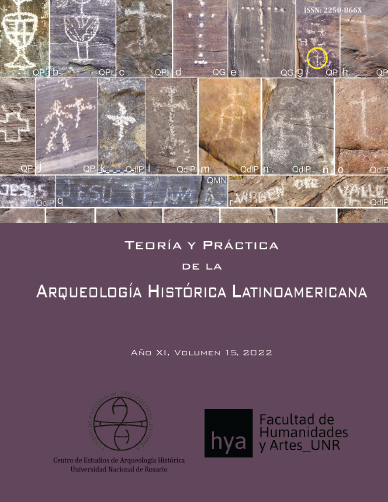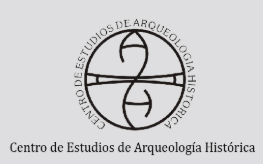Record of lithic artifacts in Fuerte Independencia, Tandil (Buenos Aires Province)
DOI:
https://doi.org/10.35305/tpahl.v15i1.180Keywords:
lithic artifacts, friendly indians, border, XIX century, eurocreolesAbstract
The first analyzes of the stone assemblages recovered in the city of Tandil, center of the mountain range of the Tandilia system, province of Buenos Aires, are presented: Casa 14 de Julio 241, area where the Fort Independencia (1823) functioned, and the findings recovered in the foothills of Parque de la Independencia. The archaeological investigation carried out has focused on the study of the occupations in the area in the 19th century and on the recovery of material evidence in different courtyards of houses. Evidence of the material culture of native and Eurocriolla populations that inhabited the fort and its surroundings was recorded. Simultaneously, analyzes of documentary sources are being carried out, which verify moments of coexistence and reciprocity between both societies. The material corresponds to the rear, southern sector of Fort Independencia and in La Plaza de Las Banderas, Parque de La Independencia, where diverse material could be seen on the surface. As a result of this, a systematic surface collection was carried out by tracing transects. One of the variables contemplated was the disturbance generated by the passage of passers-by and by the daily use of the place of recreation. Subsequently, to control the stratigraphy, a series of surveys and an excavation were carried out in the sector considered to be the fort's cemetery, where human remains have been detected. In the case of the house, artifacts were recovered through rescue activities in the face of works carried out on the site and later systematic excavations were carried out, raising a flagstone floor placed at the beginning of the 20th century. The report on lithic artifacts is a techno-typological approach (Aschero, 1983) which takes into account the origin of the findings, the types of rocks used for making instruments, as well as the correspondence with the different stages of size. Associated elements of European origin such as earthenware, glass, metal and bone remains are also mentioned.
Downloads

Downloads
Published
How to Cite
Issue
Section
License
Copyright (c) 2022 Teoría y Práctica de la Arqueología Histórica Latinoamericana

This work is licensed under a Creative Commons Attribution-NonCommercial-ShareAlike 4.0 International License.






